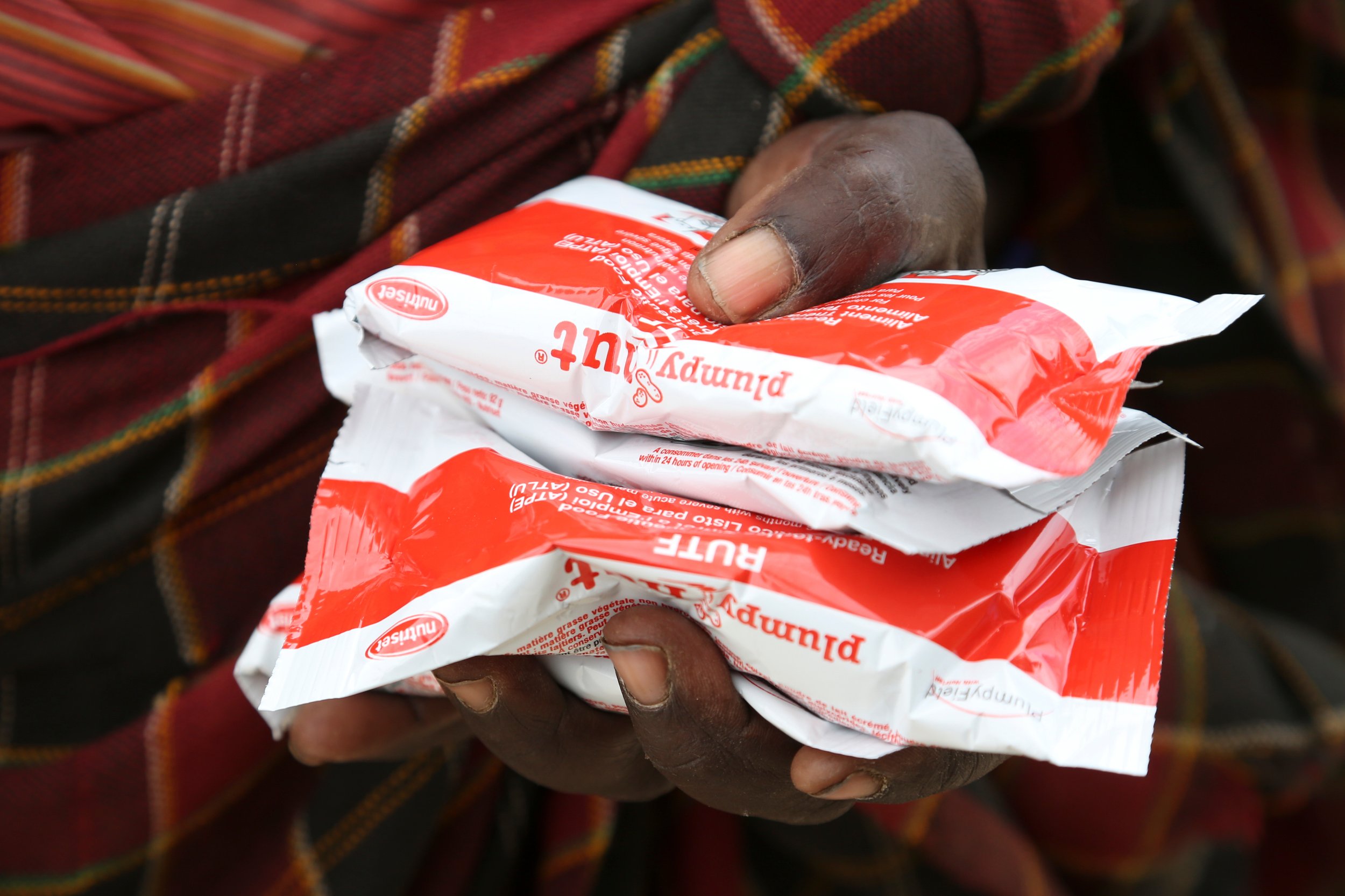Every sachet of RUFT delivered helps brings us closer to saving a child’s life.
UNICEF PROJECT
Ready-to-Use Therapeutic Food (RUTF) Distribution
Background
Severe acute malnutrition is a critical health issue, with thousands of children at risk of death. UNICEF, along with its partners, implemented the Community Management of Acute Malnutrition (CMAM) program to tackle malnutrition.
Purpose
To ensure timely and efficient delivery of nutrition products to clinics and maintain over 90% coverage for severe acute malnutrition treatment consistently.
Project Overview
Project Impact Metrics
Reduced Stock Outs
RUTF stock out were sustainably reduced from 45% to less than 5% in more than 1400 of the 1770+ clinics nationwide.
Consistent availability of lifesaving product
Having above 90% of facilities stocked with RUTF meant each time a caregiver with a malnourished child visited the health facility, screened eligible for RUTF, they would find it available almost all the time. Saving the lives of more than 30,000 cases of malnutrition annually.
Huge Cost Savings
Strategy saved UNICEF costs amounting to ~ 600,000 USD.

My Research Role
Lead UX researcher collaborated with 3 Researchers, 3 Data Analysts, 1 Database Manager, and 30 Data Collectors.
Key Collaborators
United States Agency for International Development (USAID)
World Bank
National Pharmaceutical Services
National Nutrition Department – Government
John Snow International
UK Department for International Development (DFID)
UNICEF
World Food Program (WFP)

Design Research Process & Timeline
Intended Business Impact
Reduced mortality and morbidity in malnourished children by improving CMAM services and ensuring consistent RUTF supply.
Enhancing supply management, stakeholder coordination, and installing storage facilities will lead to over 90% SAM treatment coverage.
Project Hypotheses
Research Goal
Assess efficiency of RUTF delivery system and identify areas for service improvement.
Primary Research Questions
Are the necessary products available at clinics?
How efficient is the delivery system?
Are trained staff available to deliver services?
1:1 interviews
Sample size: 10 regions;1000 -1400+clinics
Data entry using Entryware software version 6.0, analysis using STATA version 10.0 and maps using Health Mapper version 4.3 software
Quantitative Data

Mapping CMAM Services
Mapped districts with the least RUTF coverage.
Data Collection
Created a targeted list of clinics in the lowest coverage districts with no trained staff, no equipment and no RUTF.
Data Analysis


Product Journey Map
Limited warehouse storage leading to spoilage.
Budgetary restrictions for CMAM staff training and infrastructure.
Constraints
Increase digital integration earlier to improve real-time monitoring.
Engage more stakeholders in solution development.
What I would do differently
% of Clinics with RUTF Supplies on the day of survey.
% Clinics providing CMAM Services
% Staff trained in CMAM
I used data from the surveys to inform my strategy to scale and maintain the quality of service delivery.
-
Co-created a new curriculum with users
The original CMAM training was for 6 days and fundraising to train all the low coverage district clinic staff for 6 days was rejected by management. I co-created a streamlined 3-day training with government officials and clinic facility staff. This new training retained the most essential topics and enabled the trained staff to be effective CMAM providers and RUTF dispensers at clinic level. This new curriculum was accepted by my technical supervisor and the management team, resultantly trainings started immediately following authorization.
-
Supply Chain Solutions
Used data to create an annual and quarterly supply plan that factored in supplier location, order processing, shipping methods, customs and regulations and laboratory testing to estimate lead times for product availability before distribution.
-
Logistics and Supply Chain Funds
Out of the 10 regions, only two had warehouses dedicated to house RUTF with facilities to mitigate the problem of rodents which were attracted to the nutty flavored RUTF. I managed to negotiate for funding towards the construction of three prefabricated warehouses in the most strategic regions - $165,000.00 USD. To construct these, I collaborated with the Department of Planning and Civil Works who allocated two civil engineers who would provide technical oversight in liaison with the taskforce and regional engineering teams.
In addition to the warehouses, I negotiated with WFP to loan us two 40 ft containers to serve as regional warehouses for two provinces that needed lower volumes of RUTF.
-
Mentorship of CMAM staff and Program Monitoring
I developed a mentorship model and requested for the allocation of funds to provide continued guidance and support to clinic, district and regional staff. Staff were constantly refreshed on RUTF use, record keeping, utilizing data to inform local decisions and effective reporting.
-
Digital Integration of RUTF data with the near real time survey monitoring system
I forged a collaboration with the most reliable delivery and data tracking system for pharmaceuticals. This survey monitored essential drugs and medicines every 3 months. I added the delivery RUTF and measuring equipment into this national system resulting in sustained availability of RUTF for over 1.5 years.
Impact of Key Finding
Reduce stockouts to less than 5%.
Set new training goals increasing trained CMAM staff to over 90%.
Provided 600,000 USD program cost savings.














